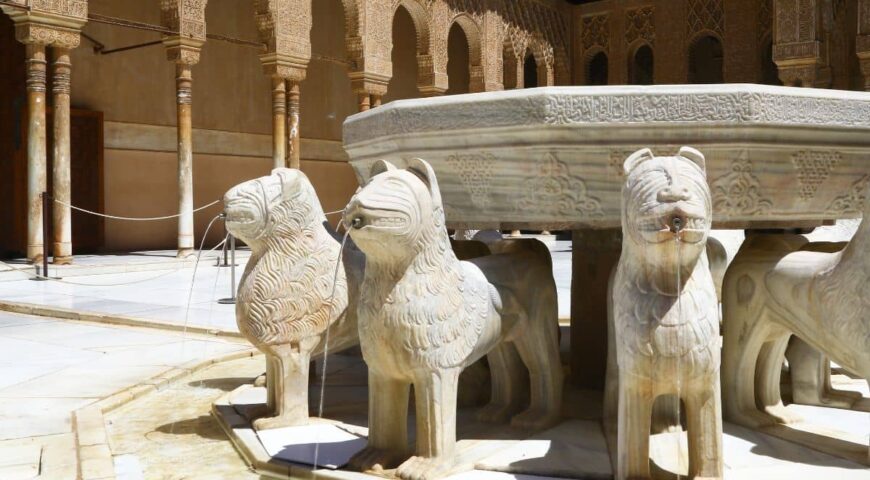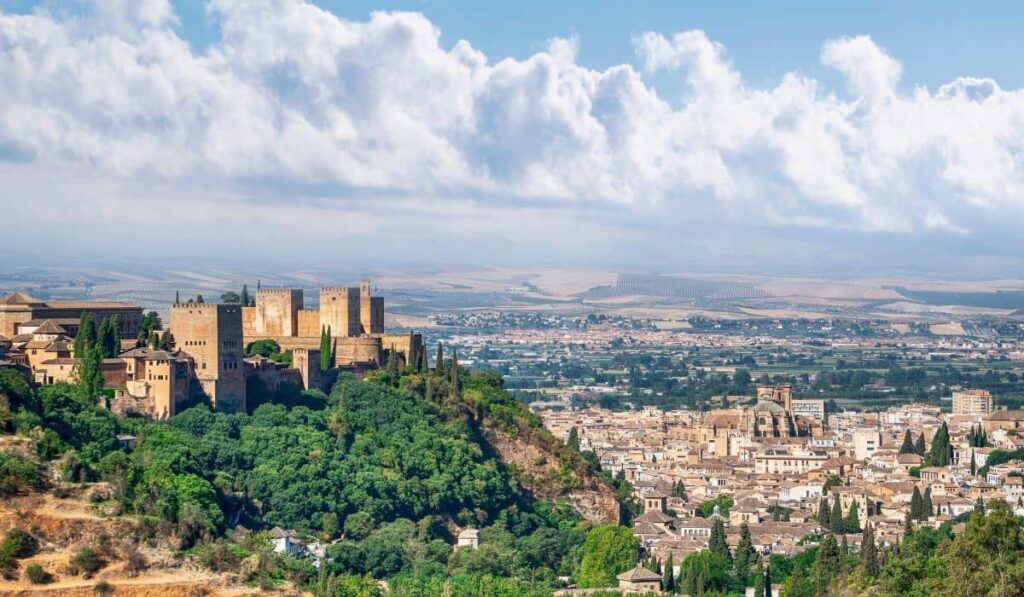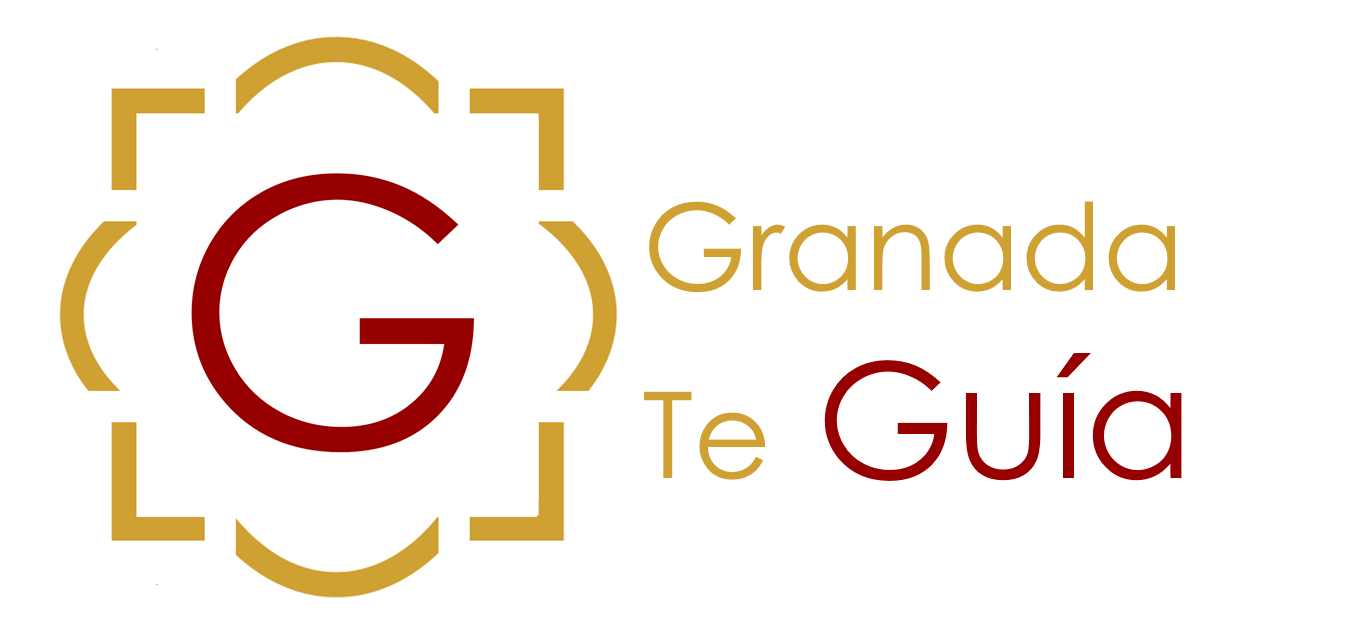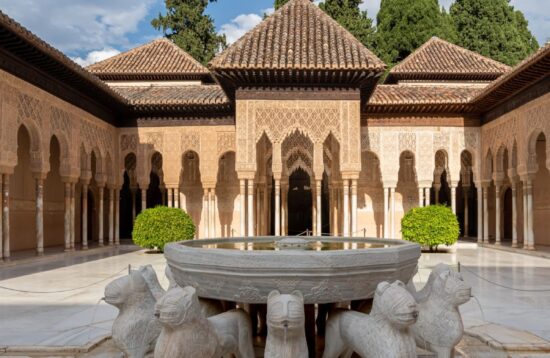
The Patio de los Leones, a legacy of timeless beauty
In the midst of the exquisite palaces and gardens that make up the Alhambra in Granada, lies an architectural treasure that has captivated visitors from around the world for centuries: the mythical Patio de los Leones. This oasis of beauty and charm, located in the heart of the Alhambra, transports us to an era of splendor and sophistication, where Islamic art reached its maximum expression.
With its unique architecture, exquisite decoration and enigmatic symbology, the Patio de los Leones is much more than a simple courtyard. It is a magical corner that evokes whispers of history and invites us to discover the secrets hidden in every detail.
Below you will learn more about this jewel of Granada:
History and architecture of the Patio de los Leones
The Patio de los Leones, the undisputed jewel of the Alhambra in Granada, is not only a testimony of splendor and beauty, but also a silent witness to history and architectural evolution. Built during the reign of Muhammad V in the 14th century, this emblematic courtyard reflects the rich influence of Islamic and Mudejar architecture that characterized the era.
From its foundations, the design of the Patio de los Leones captivates with its perfect symmetry and harmonious balance. In the center of the courtyard is an impressive marble fountain supported by twelve alabaster lions, hence its name. These lions, symbols of power and royalty, add a majestic touch to the architectural ensemble.
The columns surrounding the courtyard are another outstanding element. Each one, carved with intricate geometric and vegetal details, supports the vaulted wooden ceiling that covers the space. These columns, mostly made of white marble, display a mastery of stonework and add a sense of lightness and elegance to the ambiance.
In addition to its imposing architecture, the Patio de los Leones is adorned with calligraphic inscriptions and colorful tiles. These inscriptions, in Arabic, depict poems, Koranic verses and praises to the sultans and gods. The tiles, with their geometric and floral patterns, create a vibrant color palette that highlights the intrinsic beauty of the site.
Importantly, the architecture of the Patio de los Leones also serves a practical function. The water channels that flow from the central fountain to the four corners of the courtyard, in addition to cooling the environment on hot days, also served a symbolic purpose, representing the flow of life and purification.
Over the centuries, the Patio de los Leones has undergone modifications and restorations, but has managed to preserve its essence and magic. This magnificent example of Islamic and Mudejar architecture transports us to a time of splendor and sophistication, where every detail was carefully conceived to create a space of wonder and contemplation.

Legends and Mysteries of the Patio de los Leones
The Patio de los Leones, enveloped in an atmosphere of enigma and romance, has been the setting for numerous legends and mysteries that have endured over the centuries. These stories passed down from generation to generation have endowed the place with a mystical and fascinating air, adding layers of meaning beyond its imposing architecture.
One of the best known legends is that of the Alhambra lovers. It tells the story of two young lovers who found themselves in opposite worlds, separated by social barriers and family obligations. According to legend, the Patio de los Leones was the secret place where they met in the shadows of the night, escaping the scrutiny of others. However, their forbidden love reached the ears of those who did not approve of their union, and the lovers were tragically separated. It is said that their souls still wander the courtyard, seeking to reunite in eternity.
In addition to romantic legends, the Courtyard of the Lions has also been associated with occult meanings and mystical symbolism. Some believe that the alabaster lions, representatives of power and strength, have the ability to bestow wisdom and protection to those around them. Others interpret the calligraphic inscriptions and geometric patterns on the floor as representations of esoteric knowledge and secret teachings.
The layout of the courtyard has also raised questions and speculation. The perfect symmetry and placement of the central fountain, surrounded by the twelve lions, has led some to believe that there is a relationship to the zodiacal signs and the stars, connecting the space to the cosmos and the flow of universal energy.
These mysteries and legends have added an additional layer of fascination to the Patio de los Leones. The combination of its architectural beauty and the stories passed down through time creates an aura of enchantment and mystery that continues to attract visitors from all over the world. Even those who do not believe in the supernatural cannot deny the sense of intrigue that surrounds the place.
Symbolism and meaning
The Patio de los Leones of the Alhambra in Granada is a veritable treasure trove of symbolism and meaning, where every element and detail contributes to the aesthetic and spiritual experience offered by this iconic site. From the majestic lions to the flowing water and lush gardens, every aspect of the courtyard has a symbolic connotation rooted in the Islamic culture and worldview of the time.
The imposing and powerful alabaster lions play a central role in the symbolism of the courtyard. In Islamic culture, lions represent power, strength and royalty. These majestic animals, strategically placed around the central fountain, symbolize the dominion and authority of the sultan who ruled the Alhambra. In addition, they are attributed with the ability to protect and bestow wisdom to those around them, making them guardians of this oasis.
Water, a vital and purifying element, also plays a significant symbolic role in the Patio de los Leones. The canals and fountains that crisscross the courtyard not only serve an aesthetic and practical function, but also represent the flow of life and renewal. The constantly moving water symbolizes purity and purification of the soul, inviting visitors to immerse themselves in a state of serenity and contemplation.
The lush gardens surrounding the courtyard add another level of symbolism. Gardens in Islamic culture are symbols of paradise and beauty. They represent harmony between man and nature, as well as the idea of an earthly Eden. The landscaped courtyards, with their lush and aromatic vegetation, create an atmosphere of freshness and tranquility, inviting visitors to connect with nature and find inner peace.
In addition to these prominent elements, architectural details, such as calligraphic inscriptions and geometric patterns, also have symbolic significance. The Arabic inscriptions, which include poems, Quranic verses and praises, bring a spiritual dimension to the courtyard, recalling the importance of faith and devotion in daily life. The geometric patterns, on the other hand, represent the perfection and harmony of the universe, inviting contemplation and reflection on the divine order.
Before finishing, it is important to emphasize that if you want to visit the courtyard of the lions and not miss any detail you can go to a tour guide to take a complete experience.





